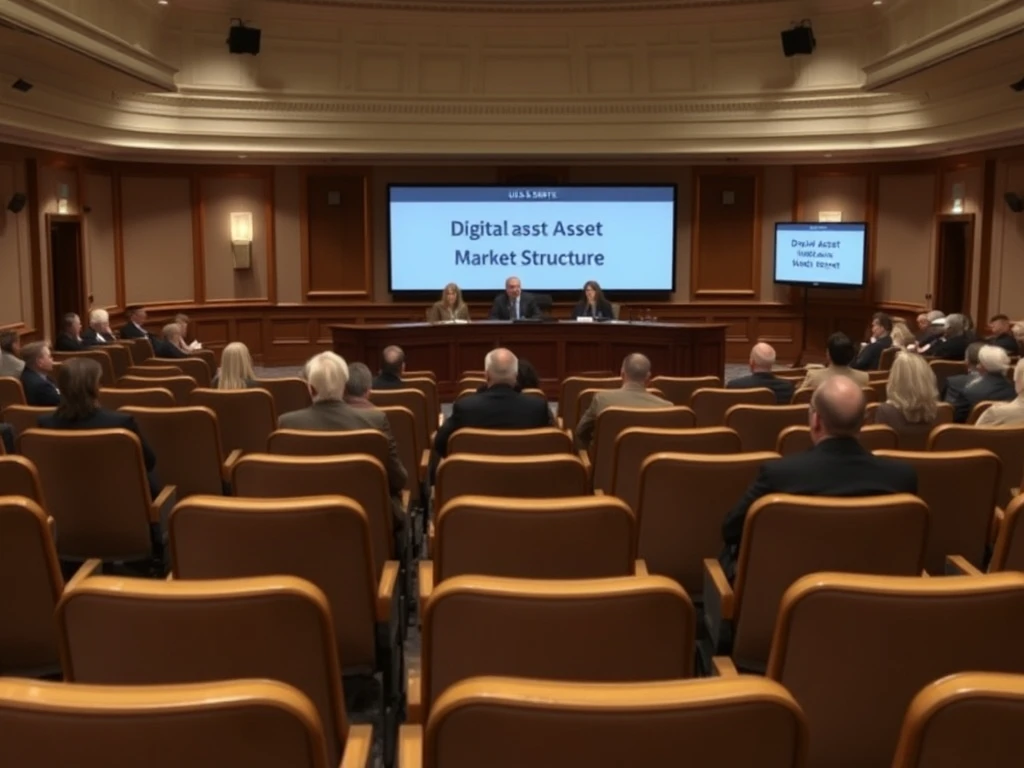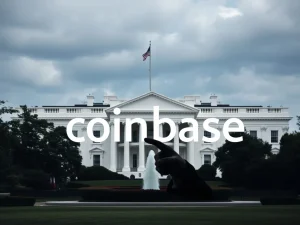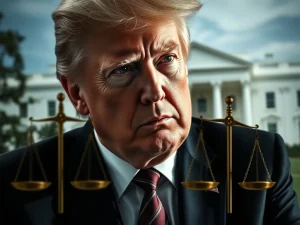Senate Crypto Hearing Reveals Concerning Lack of Support for Market Structure

A recent Senate crypto hearing aimed at discussing the future of digital asset regulation saw strikingly low attendance. For anyone following the push for clear rules in the crypto space, this absence raises questions about the path forward for establishing crucial frameworks.
Setting the Stage: A Look at the Senate Crypto Hearing
On a recent Tuesday, the US Senate Banking Committee’s subcommittee on digital assets convened a hearing titled “Exploring bipartisan legislative frameworks for digital asset market structure.” The goal was to gather insights from experts on how to build a functional regulatory framework. However, the visual told a different story. Out of the 11 senators typically on the subcommittee, only five were present to question the witnesses.
Subcommittee Chair Cynthia Lummis acknowledged the situation, suggesting scheduling conflicts with “a lot of competing committees” might explain the low turnout. The panel of experts included former regulators like Rostin Behnam (former CFTC Chair), industry representatives like Ryan VanGrack (Coinbase) and Greg Xethalis (Multicoin Capital), and academic Sarah Hammer (University of Pennsylvania Wharton School).
Why Does Crypto Market Structure Matter?
The concept of crypto market structure is fundamental to bringing clarity and stability to the digital asset space. It involves defining which assets fall under which regulatory body’s jurisdiction (like the SEC or CFTC), establishing rules for exchanges, and ensuring investor protection. Without a clear structure, businesses and investors face uncertainty, potentially hindering innovation and adoption in the United States.
Lawmakers at the hearing questioned experts on the core principles needed for potential legislation. This effort follows the Senate’s recent success in passing a stablecoin bill, the GENIUS Act, indicating some momentum exists, albeit potentially fragile.
Navigating US Digital Asset Policy
The development of comprehensive US digital asset policy has been a complex and often slow process. Senator Lummis expressed concern about the apparent lack of bipartisan engagement on the market structure topic, noting she didn’t want to create legislation without adequate input from the other side. She speculated on potential reasons for the shift in engagement, hinting that factors outside the policy itself might be at play.
Lummis alluded to potential conflicts of interest related to individuals with family members in the current administration being involved in digital assets, suggesting this could be causing hesitation or concern among some lawmakers. While not naming names, the implication points to political dynamics influencing the legislative process.
The Push for Digital Asset Legislation
Efforts to enact clear digital asset legislation are underway in both chambers of Congress. In the House of Representatives, the Digital Asset Market Clarity Act, or CLARITY Act, has advanced out of committee and is anticipated for a floor vote soon. In the Senate, the focus is on building on the momentum from the stablecoin bill to tackle the broader market structure issue.
Despite the challenges, the push for legislative clarity persists as industry participants and regulators seek defined rules of the road for cryptocurrencies and other digital assets.
The Struggle for a Bipartisan Crypto Bill
Achieving a truly bipartisan crypto bill in the current political climate appears challenging, despite the stated goal of the hearing. While some Democrats joined Republicans in passing the GENIUS Act, the path forward for broader market structure legislation seems less clear.
Senator Angela Alsobrooks, the sole Democrat present at the hearing (filling in for the ranking member), has supported digital asset legislation, co-sponsoring and voting for the GENIUS Act. However, reports suggest that some Democrats may continue to oppose future bills unless provisions are included to address potential conflicts of interest, specifically those linked to the president’s ties to the crypto industry.
This division highlights the political hurdles that must be overcome to pass comprehensive digital asset regulation that can garner broad support across the aisle.
Summary
The low attendance at the recent Senate hearing on crypto market structure underscores the significant challenges facing efforts to pass comprehensive digital asset legislation in the United States. While there is a recognized need for clear rules governing the crypto market structure, political dynamics, potential conflicts of interest concerns, and competing priorities appear to be slowing down progress.
Achieving a truly bipartisan crypto bill remains an uphill battle. For the future of US digital asset policy, sustained engagement and a willingness to navigate complex political landscapes will be crucial if lawmakers hope to establish the regulatory clarity the industry and investors are seeking.








